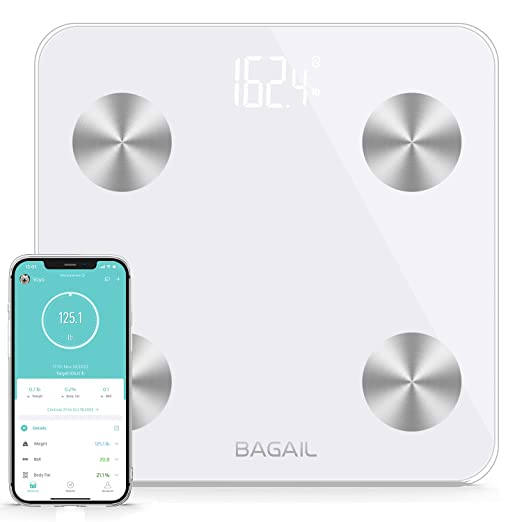Everyone should exercise, but not everyone loves it. This presents an issue – how much cardio do you have to do day by day to take care of health and performance?
This text goes to go over the main points and inform you how much cardio you must do day by day and what type is best. Plus, we’ll even go over how much to do to maximise your results! So, how much cardio per day do you have to do?
What Is Cardio?
This may look like a silly query, but it surely’s essential. Some people might imagine that easy walking is cardio, while others might imagine you “must sweat” for it to be cardio.
Due to this fact, let’s break down what “cardio” is in order that we are able to inform you how much of it you must do.
“Cardio” = Cardiovascular Exercise
“Cardio” is brief for “cardiovascular exercise,” which refers to any physical activity that raises your heart rate and keeps it elevated for a sustained period.
Your cardiovascular system is your body’s system to move oxygen and nutrients in blood. It consists of;
- Heart
- Blood vessels
- Blood
Ultimately, cardiovascular exercise is physical activity that “trains your heart” by placing a greater demand on it. We 100% support increasing physical activity by increasing your steps; nonetheless, that is why simply walking may not technically meet the factors for “cardio.”
What Does the Cardiovascular System Do?
As you may imagine, improving the health and performance of your cardiovascular system is essential. It serves a ton of functions, including;
- Delivers oxygen and nutrients to tissues
- Removes carbon dioxide and waste
- Helps maintain body temperature
- Supports immune function and healing
Due to this fact, cardiovascular exercise is primarily concerned with improving your heart health in addition to your lungs. Collectively, this can improve the entire above functions in your body.
Once we’re talking about performance specifically, increased cardio health will give you the option to deliver oxygen and nutrients to your muscles more efficiently. This will help improve;
- Endurance
- Recovery during exercise
- Recovery after training.
Is Walking Considered Cardio?
Before we go further, we’ll say there’s some nuance here based on the language used but that is what we feel most closely fits the definition with a purpose to see significant advantages.
Some people incorrectly label “cardio exercise” as exercise at any intensity, equivalent to walking on the beach or going for a leisure cycle. While we encourage this as well, it doesn’t meet the minimum threshold for cardio.
Cardio is an exercise that elevates the guts rate for an prolonged duration at the suitable intensity. There are generally two levels of intensity.¹
- Moderate intensity:50–70% of HRmax
- Vigorous intensity:70–85% of HRmax
By this, we see that fifty% of your heart rate max is the minimum threshold for exercise to be considered cardio.
To find out your max heart rate, this basic equation can offer you a rough idea;
Are HIIT And Intervals Considered Cardio?
Now, that is where some context and nuance are available in. We are able to obviously exercise harder than 85%HRmax. This includes things equivalent to;
Nonetheless, cardio is mostly defined as exercise that elevates the guts rate to at the very least 50%HRmax for at the very least 10 minutes. This eliminated maximal efforts, as you may’t sustain maximum speeds for this long.
As well as, through the years, cardio has also been used interchangeably with “aerobic training.” “Aerobic exercise“ refers to exercise that is fueled by your aerobic metabolic system, which requires oxygen.
Physiologically, this method takes a bit longer to supply energy but is in a position to achieve this in large quantities. This makes it the first metabolic system to power prolonged exercise of moderate Intensity.
Nonetheless, “cardio“ ultimately means training your cardiovascular system. HIIT and intervals are definitely going to do that as well. Further, they improve your VO2max, which is taken into account to be the final word measure of fitness.
Due to this fact, we do consider that HIIT can contribute to your overall cardio training.
How Much Cardio Per Week Should You Do?
So, let’s start with the fundamentals and lay out the minimum amount of cardio you must perform every week. These numbers are set for by various Health Organizations: ²
- 150 minutes of moderate-intensity OR,
- 75-90 minutes of vigorous-intensity OR,
- Combination of each.
Further, this must be unfolded across the week, i.e.
- half-hour X 5
- 50 Minutes X 3
Regardless that the Health Organizations say “any movement,“ we feel that every session must be at the very least 10 minutes and at 50% HRmax. This can easily be done with brisk walking.
This doesn’t mean we do not think general movement is bad; it’s 100% helpful. Nonetheless, cardiovascular exercise should stress the guts, so if the physical activity is simply too low, this would possibly not occur.
Types Of Cardio
In relation to the actual exercise, it doesn’t matter what one you employ so long as you may perform it continuously. This can include
- Running
- Cycling
- Jogging
- Rowing
- Brisk Walking
- Rucking
- Stair climbing
Literally, anything that’s able to sustaining your heart rate for a chronic duration can qualify as cardio.
Even dancing has been found to offer cardio and weight reduction advantages!³
Walking
You’ll have heard us discuss walking before, but we strongly consider it’s the simplest behavior change society could make. We’re strong believers within the “10,000 steps a day.”
Research has consistently shown that increasing day by day steps produces a plethora of advantages, including:⁴
- Improved body composition
- Decreased cardiovascular mortality risk.
- Decreased all-cause mortality
- Improved mental health.
Aspects To Consider
Now, let’s go into a number of aspects which will dictate how much cardio you would like to do.
1. How Much Activity Do You Do?
This might be perhaps the biggest factor. Depending in your other activity level, you must do a whole lot of cardio.
Are you working at a bank where you sit down all day? Or do you’re employed on a construction site and go to the gym 3 times per week?
For those who’re incredibly energetic and go to the gym, you could possibly get away with less cardio throughout the week. Alternatively, should you live a sedentary life, you must definitely be getting 150+ minutes weekly
2. What Type Of Cardio Are You Doing?
High-intensity? Low-intensity? Moderate? And the way much of every are you doing? For instance, someone who performs 5 quality HIIT sessions every week may give you the option to get away with only doing brisk walking for cardio.
Alternatively, should you’re only doing low-intensity exercise, you must attempt to get in as much as possible. You see, it’s as much as you to actually take a look at all the picture to find out what your goal must be.
3. Why Are You Doing Cardio?
This is one other factor to think about. Why are you doing cardio? For general health? To enhance your cardio? For performance advantages? To burn calories?
For those who’re doing cardio to burn calories, this can rely on your food regimen and caloric needs.
Or do you’ve health conditions that you just’re attempting to reverse? Research shows that increased cardio can provide greater advantages for those affected by various conditions, equivalent to heart problems.⁵
Should You Do Cardio On a regular basis?
One query many individuals have concerning cardio is whether or not they can do it day by day.
It largely is determined by;
- What style of cardio you are doing
- The intensity of your cardio
- Duration of the cardio
- Your current physical and fitness level
For instance, should you’re doing long duration at higher intensities, equivalent to 30+ minutes at 75-80%HRmax, you might have to allow recovery days should you’re latest to cardio. Alternatively, should you’re fit and have experience with cardio, half-hour is perhaps your recovery day!
Due to this fact, with regards to moderate-high intensity cardio, it will largely rely on you and the way much you do.
Nonetheless, we strongly consider in walking every single day and increasing your general activity. This type of cardio is not stressful on the body or joints, so there’s minimal, if any, risk of injuries brought on by overuse.
So, yes, you may do cardio every single day. In reality, we actually think you must include cardio on a regular basis assuming we’re considering brisk walking as “cardio“. Depending on the intensity level and duration of exercise, you might have to alternate days of low-intensity and high-intensity.

How To Optimize Cardio
Above, we discussed the minimum amount of cardio everyone should do. Now, let’s examine how to really optimize our cardio.
More Is Higher
One problem with our society is that we hear things like “150 minutes is the minimum amount of cardio weekly“ and “150 minutes is the utmost amount of cardio weekly“ or “all you would like is 150 minutes of cardio weekly.“
In point of fact, that is the minimum, and more is best.
In fact, you may do an excessive amount of, but it surely seems as if there may be a dose-response between cardio and advantages of as much as 300 minutes weekly!² That is twice as much because the minimum!
This same principle applies to walking as well. While 7,500 steps day by day seem to present you probably the most bang on your buck, research shows a dose-response as much as 20,000 steps day by day!⁴
Use Variation Of Cardio
Assuming you are getting in loads of cardio, you could possibly then concentrate on using a wide range of cardio. Not necessarily the kind you do however the intensity;
- Low – We are able to consider this to be general activity and walking
- Moderate/Vigorous – This might be your traditional cardio within the 50-85%HRmax range.
- High- This might be considered your HIIT and Interval training.
While all of these will profit your heart and cardiovascular system, they’ll use different physiological systems, equivalent to your aerobic and anaerobic metabolic systems. An optimal functioning body will include some specific training for every.
To get probably the most advantages out of your cardio, include a variation. This includes;
- Getting 150 minutes of moderate-intensity or 90 minutes of vigorous activity
- Not less than one session of high intensity to coach your anaerobic system
- Not less than one session of exercise that is 30+ minutes @ 70%HRmax to coach your endurance and really stress your aerobic system
- Get in as much general activity and walking as possible.
Final Say On How Much Cardio You Should Do?
In relation to cardio, probably the most essential factor is that you just increase your activity levels at sufficient intensity. You may ultimately do whatever style of cardio you wish so we encourage you to seek out one you thoroughly enjoy doing. Further, realize that it doesn’t all must be “exercise“. Taking your dog for an additional long walk, cycling through an area nature preserve or going out kayaking.
References






